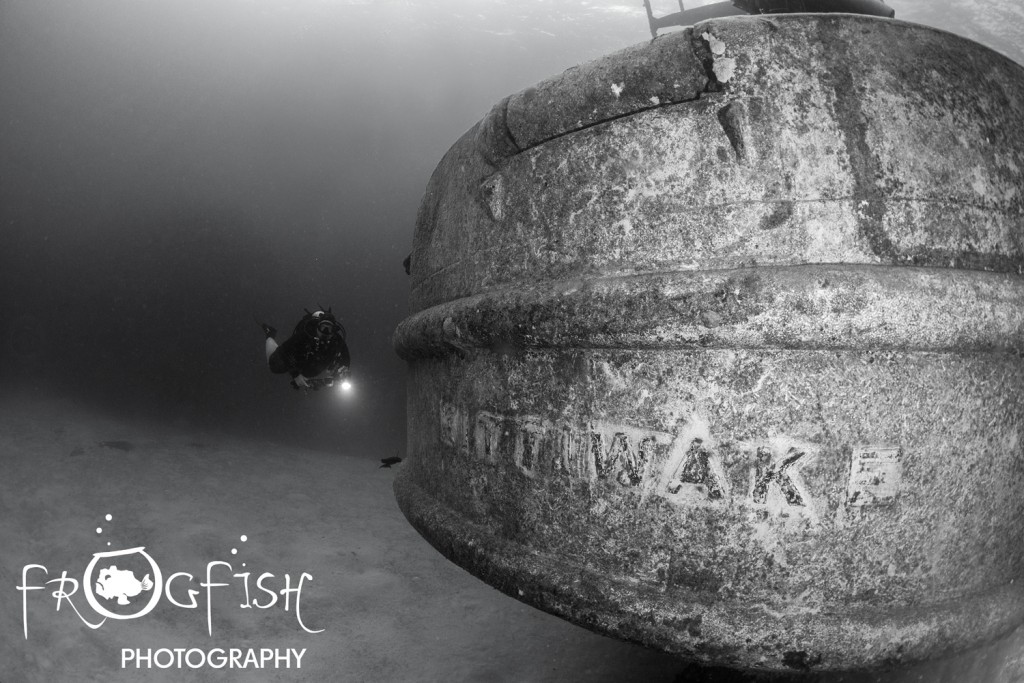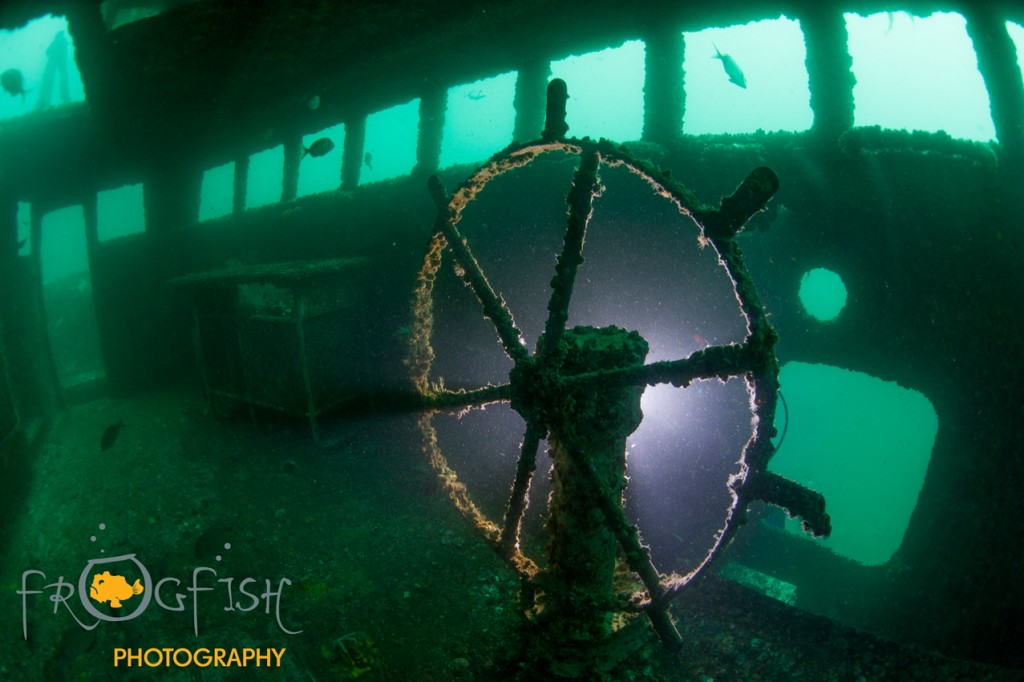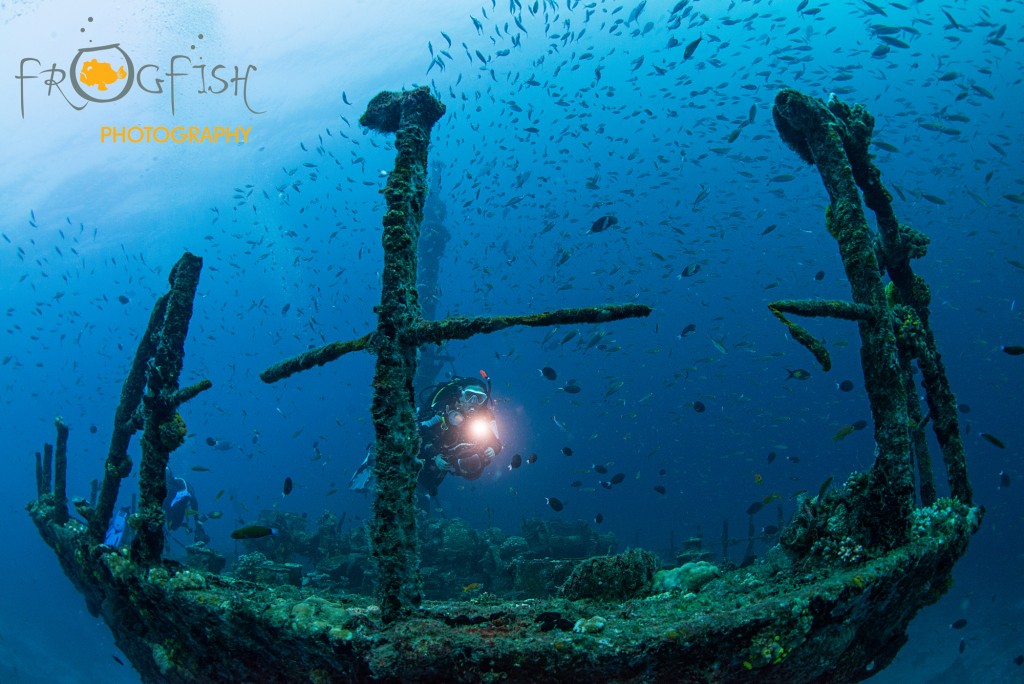News
Top 6 Artificial Reef Dives

Wreck diving is a passion for many. For some it is the history surrounding the wrecks, for others it is the marine life that finds refuge there and for others it is simply the joy of diving around a wreck, having a look inside and exploring the structures. This passion for rusting metal has encouraged a numbers of countries to deliberately sink boats, ships and military vehicles that have reached the end of their life on the seas, or the battlefield. Here are our top 6:
Charlie Brown, St Eustatius, Caribbean
The Charlie Brown (pictured left) is a 100m long cable layer sunk in 2003 off the tiny Caribbean island of St Eustatius. We assisted with the preparation to sink this ship and were the first people to dive it. It lies on its side in 30m of clear blue water and the shallowest of the structure is at around 18m. Schools of jacks swirl around the wreck, turtles make use of the many places to take shelter and small fish and octopus hide in every hole. The 13 years under the water has seen prolific coral growth.
Big Crab, Bahamas, Caribbean
Stuart Cove’s Dive Centre co-ordinated the sinking of this wreck (pictured right) near their famous shark feeding site. Just off the bow there is a lovely patch of reef and so divers can choose what type of dive they fancy. The best way to enjoy this wreck is when the Stuart Cove team put a bait box inside the wreck and you can explore it in the company of some 20 or so Caribbean Reef Sharks swimming around the small wreck with you.
Vandenburg, Key West, USA
The Vandenburg (pictured below) was sunk of the Florida coast in 2009. It was a former missile tracking ship and probably, the most impressive features are the large aerial arrays that you can dive around. It is a large ship wreck at 150m in length and can take several dives to fully explore. It sits fully upright in the water and so to ensure boat clearance, some structures had to be cut down to give 12m from the top of the wreck to the surface.
Kittiwake, Cayman Islands, Caribbean
The ex-USS Kittiwake (pictured below) is situated in a marine park off Grand Cayman in the Cayman Islands in the Caribbean. To visit this wreck you have to pay a marine park fee which is used to protect this area and ensure the wreck remains in a good and safe condition. The ship used to be a submarine rescue vessel and was sunk deliberately for divers in 2011. Set in shallow water, with escape routes cut into her structure, this is a popular wreck for novice divers as well as underwater photographers who want to get images both inside and out.
Ocean Revival, Portugal
Ocean Revival (pictured below) is a series of 4 wrecks which have been deliberately sunk near each other off the coast of the Algarve in Portugal to create an immense artificial reef. All 4 ships were decommissioned ex-navy ships, sunk in 2012 and include a corvette, a frigate, a patrol ship and a hydrographic ship. The ships were sunk to promote marine life in the area and are now home to a huge array of species from colourful nudibranchs to inquisitive ocean triggerfish.
Machafushi, Maldives
The wreck of the Kudhimaa lies just off the island of Machafushi in the Maldives. It was sunk in 1998 to provide divers with something different from the sharks, mantas and other marine life dives the area is known for. It sits upright in the water and is a great site for underwater photography. The wreck is covered in marine life, with coral and sponges clinging to every surface. Batfish follow you on the dive as you hunt for frogfish, scorpionfish and eels hiding on the structure.
Did your favourite artificial reef make it on to the list? Have you dived on any of the artificial reefs that are included? Let us know in the comments section below!
Photos: www.frogfishphotography.com
News
Discover Utopia Blue: A New Haven for Divers and Marine Adventurers

Euro-Divers is excited to introduce Utopia Blue Resort, the newest addition to the Utopia family and Euro-Divers Egypt, opening in June 2025. Designed with modern elegance and offering premium all-inclusive services, Utopia Blue is set to become a premier destination for divers and sea enthusiasts.
Situated along the breathtaking Red Sea coastline, Utopia Blue offers easy access to world-class dive sites, including vibrant coral reefs, stunning caves, and historic wrecks. Guests can enjoy seamless diving experiences, guided excursions, and professional training courses led by Euro-Divers’ experienced team.

After an exhilarating day underwater, visitors can relax in spacious, stylish rooms, indulge in exquisite dining options, or unwind at the beachside infinity pool. Whether an experienced diver or a beginner, Utopia Blue provides the perfect gateway to an unforgettable Red Sea adventure.
For more information, please contact adel@euro-divers.com.
News
Go Diving Show 2025 Main Stage Speaker: Rannva Joermundsson

Originally from the Faroe Islands and now based in Cornwall, Rannva Joermundsson is Head of Sales for Fourth Element.
A diver since 2008, she is passionate about encouraging young people, particularly women, to enter the world of technical and cave diving.
Rannva co-founded Nixie Expeditions with Maria Bollerup, and together they were the project leads on the successful Expedition Buteng in Southeast Sulawesi, Indonesia in October 2024.
Rannva’s other projects include serving as Expedition Divemaster on a private expedition to Antarctica, which involved submarine and helicopter operations. She also took part in the 2021 Xunaan-Ha Expedition in Mexico, supported by Rolex’s Perpetual Planet Initiative.
More recently, Rannva joined the Darwin200 project, completing a transatlantic crossing on a tall ship and developing a coral transect project in Brazil. Finally, she served as Expedition Divemaster organising diving logistics for 30 people on a private expedition to Cocos and Galapagos in January 2025.
Rannva is a public speaker, member of the Explorers Club and serves on the Explorers Club Watch Committee, as well as being a Flag Carrier for WINGS Women in Discovery.
Go Diving Show 2025 takes place at the NAEC Stoneleigh Park, Coventry, on the 1st -2nd March.
-

 Gear Reviews2 months ago
Gear Reviews2 months agoGear Review: SurfEars 4
-

 Marine Life & Conservation2 months ago
Marine Life & Conservation2 months agoPaul Watson Released as Denmark Blocks Japan’s Extradition Bid
-

 Blogs3 months ago
Blogs3 months agoExperience Malta and Gozo in 2025: A Paradise for Divers and Culture Lovers
-

 Blogs3 months ago
Blogs3 months agoJeff Goodman Launches Underwater Moviemaker Course with NovoScuba
-

 News3 months ago
News3 months agoDive into Adventure: Limited Space Available for January Socorro Liveaboard Trip with Oyster Diving
-

 News4 days ago
News4 days agoHumpback Mother and Calf Win Underwater Photographer of the Year 2025
-

 News1 month ago
News1 month ago2-for-1 tickets now available for GO Diving Show
-

 News2 weeks ago
News2 weeks agoFilming 360 in The Bahamas





















